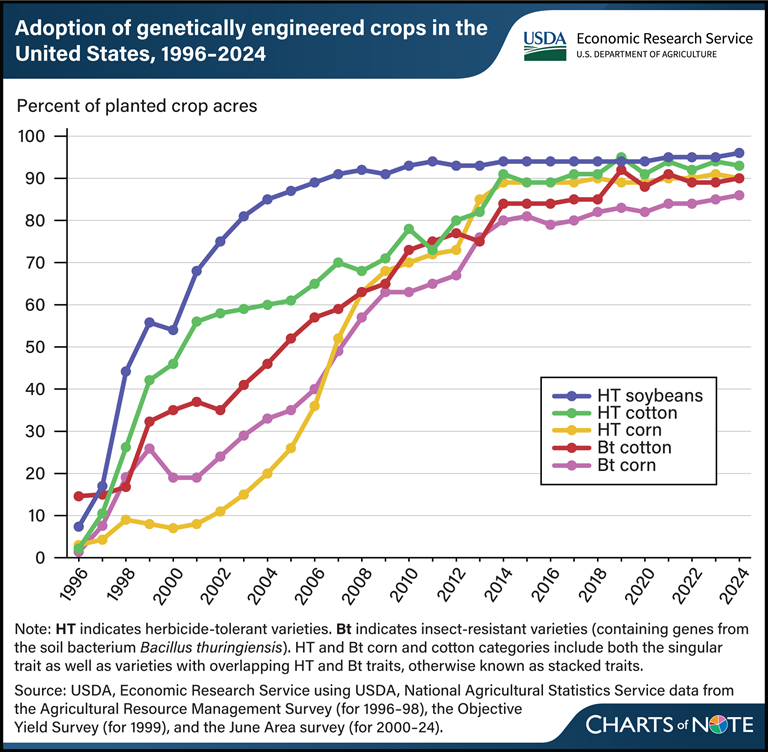GMOs grown in the U.S.? Same old, same old

Published: October 11, 2024
Category: GMO News
After more than 20 years of GMO crop production, just two traits are the most common GMOs: herbicide tolerant and insect resistant
Despite decades of promises of feeding the world with genetically engineered foods by the biotechnology industry, the most common genetically engineered crops contain just two traits, herbicide tolerance (HT) and insect resistant (Bt).
Genetically engineered seeds were commercially introduced for major field crops in the United States in 1996, with adoption rates increasing in the years that followed. The most planted trait types of genetically engineered seeds are herbicide tolerant (and insect resistant. These traits can be added individually to seeds or combined into in a single seed, called stacked seed traits. USDA, Economic Research Service (ERS) reports information on genetically engineered HT and Bt crops in the data product Adoption of Genetically Engineered Crops in the U.S. These data show that by 2008 more than 50 percent of corn, cotton, and soybean acres were planted with genetically engineered seeds using at least one trait—a number that has risen to 90 percent as of 2024.
Although traits other than Bt have been developed, such as virus, fungus, or drought resistance, and enhanced protein, oil, or vitamin content, HT and Bt traits are the most commonly used in U.S. crop production. While HT seeds are also widely used in alfalfa, canola, and sugar beet production, most genetically engineered acres are planted to three major field crops: corn, cotton, and soybeans.
Source: U.S. Department of Agriculture Economic Research Service
To view source article, visit:
https://www.ers.usda.gov/data-products/chart-gallery/gallery/chart-detail/?chartId=110141
Organic & Non-GMO Insights October 2024




